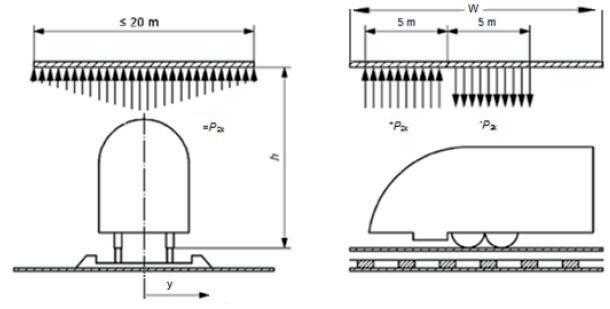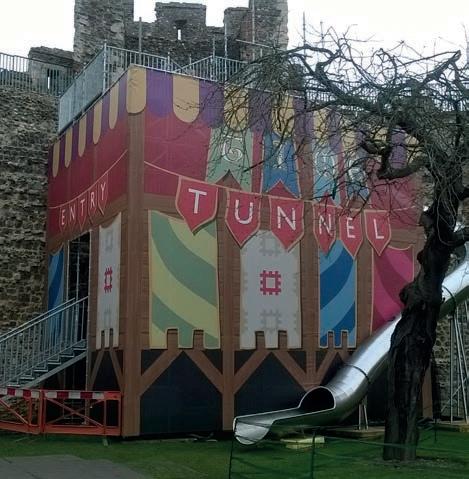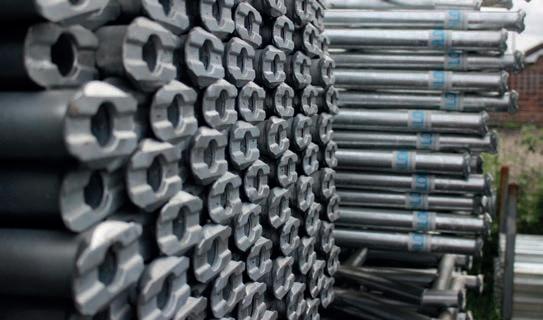
2 minute read
Storm Doris sets challenge for Godiva
from AccessPoint Issue 02
by AccessPoint
It’s not uncommon for specialist contractors to be called in at a moment’s notice to provide emergency support. When Storm Doris battered the UK in February, uprooting trees and damaging buildings, railways and roads, the huge University College Hospital Coventry in Walsgrave, on the north side of the city, was caught in the wake of winds gusting over 80mph. Coventry-based Godiva Group responded and Adrian JG Marsh reports on their work.
Innisfree, Skanska, VINCI, GE and ISS Mediclean. The hospital is equipped with 1,250 beds, 27 operating theatres and employs more than 6,000 staff.
Karl DeGroot, general manager at Godiva, said: “This was a very fast-moving project and we decided that adopting a system-led solution was the best approach. Because of the connections and the way the node systems work, we knew that we’d be able to have a system designed and erected much faster than if we used tube and fitting.
and knew that the AT-PAC Ringlock System would provide sufficient strength to complete the job with the minimum components. We used our in-house technical draughtsman to draw the required scaffold and then forwarded this to Godiva for approval. Our engineering team and Godiva then worked as a team to complete the design in the time available, allowing equipment to be delivered on the day the job had to start.”
Godiva and AT-PAC had to take account of some operating challenges that meant no ties were permitted into the building fabric due to it being rendered and patching difficulties, as well as a lack of through-tie opportunities.
“After the hurricane damaged some facade panels at the hospital, we were approached by VINCI who asked us to erect scaffolding urgently so that the hospital’s facilities team could inspect and repair the

University College Hospital
“The design benefits and speed in getting it up meant system was the best choice. So, we teamed up with AT-PAC to devise a system design. I sketched up how it could work and then it was drawn and calc’d by the engineers at AT-PAC.”
John Brocklehurst from AT-PAC said: “We acknowledged that this was a fast turnaround contract
The design was submitted within 12 hours and Godiva commenced construction following approval the next day. The structure was erected by a team of four specialists within seven working days, reaching to a height of 28 metres with a fully buttressed supporting scaffold.
Mr DeGroot continued: “The system is a ring scaff and we briefed all our fitters who were system qualified in advance at a series of tool box talks. There is less manual handling, fewer components and less tonnage.”
The free-standing structure incorporated two public protection gantries, a full-height system staircase for operative access, both during erection and for the client, and a fully decked facade access scaffolding. A full-height rubbish chute was then added as a designed item a few days later for material removal from high level.



Mr Taylor summed up Godiva’s experience, commenting: “This was our first experience utilising the
AT-PAC system and from the initial design through to project completion, we’ve been impressed with both the response and overall level of service provided.
“The system provided an increased level of safety and reduced manual handling while increasing output levels, which all resulted in a delighted client and a quality finish. It was a great effort all round – a real platform for success for all concerned.”








